Hormonal Acne in Perimenopause: Why It Happens and What You Can Do About It
If you’re in your 40s or 50s and suddenly dealing with breakouts again, you're not imagining it—and you're not alone.
Hormonal acne is incredibly common during perimenopause, the years leading up to menopause, when hormone levels start to shift.
You may have gone years with clear skin, only to find new breakouts showing up around your jawline, chin, or neck.
They might feel deeper, more painful, and slower to heal than any acne you remember from your teenage years.
Let’s talk about why this happens, what’s going on beneath the surface, and how you can support your skin (and your hormones) through this phase.
Why Hormonal Acne Happens in Perimenopause
Perimenopause is a time of major hormonal fluctuation, especially with estrogen and progesterone. These hormones don’t decline in a straight line. They can spike and crash from month to month, which affects everything from your mood to your skin.
Here’s what’s happening when it comes to acne:
Estrogen and progesterone start to decline, and this creates an imbalance with androgens (like testosterone), which may not drop as quickly. This imbalance can lead to increased oil (sebum) production, clogged pores, and inflammation.
Chronic stress can elevate cortisol, a stress hormone that increases inflammation and disrupts your skin barrier.
Slower cell turnover and a thinner skin barrier (both common with age) can make skin more reactive and slower to heal.
Insulin resistance, which becomes more common with age, may also play a role in hormonal acne flare-ups.
These internal shifts make perimenopausal acne unique, not just in appearance, but in how we treat it.
What Hormonal Acne in Perimenopause Looks Like
Breakouts along the chin, jawline, or neck
Deep, painful cystic pimples that don’t come to a head
Red, inflamed bumps that last longer than usual
Skin that feels oily and dry at the same time
Acne that flares around your cycle or during times of stress
It’s frustrating—and it’s not just cosmetic. Hormonal acne can impact your confidence, your comfort, and your overall well-being.
Skincare Tips That Actually Help
Many conventional acne products are made for teenagers with oily skin, not for perimenopausal skin that’s sensitive, dry, or aging. Here's how to treat breakouts without damaging your skin barrier.
1. Cleanse Gently
Use a non-stripping, pH-balanced cleanser. Over-cleansing or using harsh foaming washes can dry out your skin and trigger more oil production.
Try: Cream or gel cleansers with soothing ingredients like aloe, oat, or chamomile.
2. Support Your Skin Barrier
As estrogen declines, your skin loses moisture more easily. Barrier repair is essential, especially if you’re using actives like retinoids or acids.
Look for:
Ceramides
Fatty acids
Squalane
Cholesterol
These ingredients help restore your skin’s protective barrier and reduce inflammation.
3. Use Targeted, Gentle Actives
Skip the harsh benzoyl peroxide (or use very low percentages) and look for ingredients that fight acne and calm the skin.
Favourites for perimenopausal skin:
Niacinamide: Calms redness, controls oil, and supports the barrier
Azelaic acid: Antibacterial, brightening, and anti-inflammatory
Sulfur: Dries up active breakouts without irritation
Retinal or bakuchiol: Gentler alternatives to traditional retinoids
4. Don’t Over-Exfoliate
Chemical exfoliants (like salicylic or glycolic acid) can help with clogged pores, but too much can damage your barrier.
Start slow: 1–2x a week max, and avoid layering too many activities.
5. Sunscreen Every Day
UV exposure triggers inflammation and worsens post-acne pigmentation. Daily sunscreen helps protect collagen and calm reactive skin.
Hormone & Lifestyle Support
As a naturopathic doctor, I always look at the root cause, and that includes what’s happening inside your body. Here are a few supportive approaches that can help your hormones and skin stay balanced.
1. Balance Blood Sugar
High insulin levels can worsen androgen dominance and trigger breakouts. Focus on meals with protein, healthy fats, fibre, and slow carbs.
Tip: Avoid skipping meals—this helps prevent cortisol spikes and keeps your hormones more stable.
2. Reduce Stress (And Cortisol)
Even moderate stress can lead to skin flare-ups. Create small daily routines that help your nervous system stay regulated.
Try: Walking, deep breathing, journaling, or guided meditation—even 5–10 minutes makes a difference.
3. Support Detox Pathways
Your body clears out hormones (and hormone byproducts) through the liver and gut. If these systems are sluggish, you may reabsorb more androgens than your body wants.
Support with:
Cruciferous veggies (broccoli, kale, cauliflower)
Fibre (especially ground flax)
Hydration
Magnesium
Consider working with a practitioner to assess liver and gut function if acne is persistent.
When to Seek Medical or Naturopathic Help
If hormonal acne is severe, painful, or affecting your confidence, don’t wait to get support. There are prescription and natural options that may be right for you, including:
Spironolactone (helps reduce androgen activity)
Topical or systemic retinoids (some are better suited for mature skin)
Bioidentical hormone therapy (BHRT) (when appropriate)
Herbal and nutritional protocols to support hormone clearance and skin health
We can work together to assess hormone patterns, stress levels, gut health, and nutrient deficiencies to build a personalized plan that helps your skin—and your whole body—feel better.
The Bottom Line
Hormonal acne in perimenopause is real, common, and treatable. You don’t have to suffer through it or settle for skincare that isn’t made for you.
Support your hormones. Be gentle with your skin. And know that your symptoms are valid, not vain.
